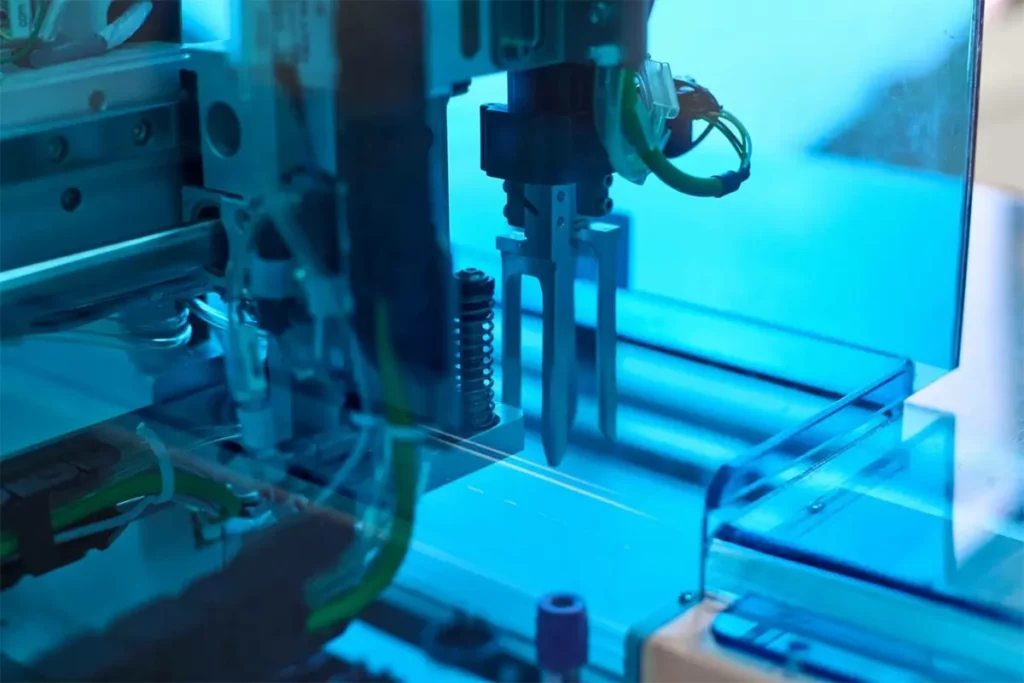In the context of manufacturing, a circular economy refers to closed-loop production, in which materials and products are kept within the system to be continually reused and repurposed, even at the end of its life cycle. This reduces our reliance on finite resources, especially for rare earths that make up a significant component of our everyday high-tech electronic devices, such as our mobile phones and laptops.
Given ongoing and widespread digitalisation and today’s ever-growing demand for high-tech electronics, manufacturers urgently need to find ways to do more with less, while also becoming more sustainable – and the circular economy could be the way to achieve this.
5 ways a circular economy can benefit manufacturers
A circular economy is not only more environmentally friendly but also boosts the profitability and competitiveness of manufacturers.
First, reusing and recycling products and materials allows manufacturers to be more sustainable by reducing waste, saving energy, and conserving resources. In a linear economy, products are created, used and then discarded as waste. In contrast, in a circular economy, resources are kept in use for as long as possible to extract maximum value. This means that products are designed with a focus on durability and repairability, and materials are recovered and regenerated at the end of their life cycle.
By creating a closed-loop system, a circular economy maximises resource efficiency and minimises waste. The circular economy also supports supply chain resilience as it reduces the reliance of new raw materials.
Additionally, a circular economy reduces greenhouse gas emissions as materials are kept in circulation and reused or recycled as long as possible. This reduces the need to extract new resources, thus significantly cutting greenhouse gas emissions that are related to production and distribution. The use of renewable energy sources is also encouraged in a circular economy.
Further, establishing a circular economy drives innovation and creates jobs, as it requires manufacturers to improve product design and account for circularity. As companies strive for more efficient solutions, they may develop circular business models which can open up new markets and introduce new value-adding opportunities.
Establishing a circular economy could unlock trillions of dollars in the global economy, create hundreds of thousands of jobs and lead to millions of tonnes of avoided emissions, bringing manufacturers closer to their net-zero goals. On top of that, sustainable practices often result in a positive reputation for manufacturers and attracts customers who have become increasingly environmental conscious.
Starting from the top: governmental policies that promote circular economy
As climate change exacerbates severe weather conditions, governments around the world have begun to prioritise policies that promote circular economy. Ultimately, policy incentives are needed to remove market barriers impeding businesses from going green.
In fact, governments can directly influence and drive circularity from the top down by changing their own procurement practices. More than 250,000 public authorities in the European Union (EU) spend around 14% of GDP (around €2 trillion per year) annually on the purchase of services, works and supplies.
Yet the question remains – are the manufacturers who claim to be green really putting in place sustainable initiatives, or are they greenwashing? Adhering to the circular economy action plan requires countries to target how products are designed, promote circular economy processes, encourage sustainable consumption, and ensure that waste is minimised and resources used are kept within the economy for as long as possible. For example, the EU has introduced legislative and non-legislative measures to make circularity a reality. They have also put in place a circular economy monitoring framework to monitor and assess if current policies are effective.
In essence, governments have realised the need for a standardised framework like our Consumer Sustainability Industry Readiness Index, or COSIRI, to gauge the effectiveness of a manufacturer’s green initiatives.
Challenges when transitioning to a circular economy and how to solve these
The transition towards a circular economy represents an essential step towards sustainable economic growth. However, making this shift requires considerable effort and resources, not to mention technical knowledge and paradigm shifts. As such, it poses various challenges and will require concerted efforts to achieve.
For a start, the technical challenge has proven difficult to breach. High-tech electronics have become increasingly complex to accommodate the creation of advanced technologies. This complexity and diversity have led to increased difficulty in repairability and recyclability due to a wide range of components and parts.
To overcome this technical barrier, manufacturers should focus on revamping their product design protocols and developing a new ecosystem which prioritises circularity and green initiatives. Manufacturers will need the support and guidance of established frameworks and benchmarks as stipulated in COSIRI to do so effectively. Governments should also incentivise such a change to encourage greater circularity.
On the regulatory front, governments should implement a universal set of standards, policies and benchmarks that support a circular economy. An established framework like COSIRI would be useful in gauging manufacturers’ commitment and compliance with green initiatives, as well as their progress towards greater sustainability. At the same time, this will help combat greenwashing.
The complexity of high-tech electronics is not limited to the design and number of parts behind it. Logistically, the electronics industry relies heavily on complex global supply chains, making it difficult to establish the necessary infrastructure and logistics for circularity. Manufacturers will need to establish stronger partnerships with each other, transportation networks and other stakeholders to overcome this hurdle.
The last challenge to establishing a circular economy is an intrinsic one – the behavioural challenge. A lack of consumer awareness and business willingness may impede the adoption of circular practices. In order to alter consumer behaviour and set circularity in motion, governments will need to educate and incentivise better consumer behaviour.
How INCIT can help
Through the use of COSIRI, a neutral, independent framework that is recognised worldwide, governments can be assured that manufacturers that bear a COSIRI rating are benchmarked according to stringent standards. This can help governments accelerate the implementation of a circular economy in high-tech electronics.
Additionally, COSIRI allows manufacturers to measure the impact of any green solutions implemented, to ensure they are effective.



